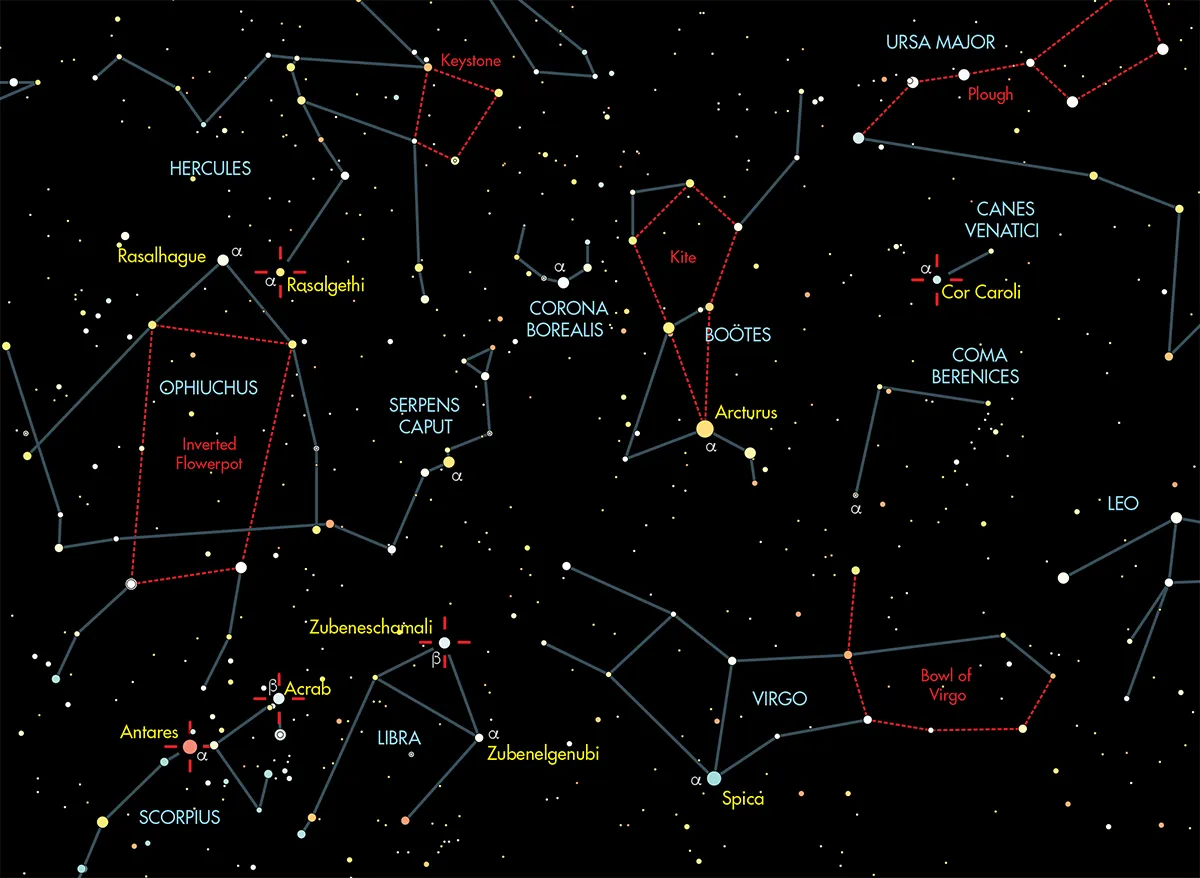The star Beta (β) Librae, also known as Zubeneschamali, sits at the top of the fairly indistinct constellation of Libra, the Scales.
Libra, and therefore Zubeneschamali, is best seen in the spring and summer skies, in the northern hemisphere.

At mag. +2.6, it is a middling brightness star that can be seen with the naked eye, meaning you don't need binoculars or a telescope to spot it.
Zubeneschamali means ‘northern claw’, its counterpart being mag. +2.8 Alpha (α) Librae or Zubenelgenubi, which means ‘southern claw’.
Although it seems odd to have two ‘claws’ in a constellation representing a set of balance scales, this makes more sense when it’s revealed that Libra used to be part of neighbouring Scorpius, the Scorpion.

Facts
Zubeneschamali is a B8V dwarf star with a surface temperature around 12,300K.
It’s around 130 times more luminous and 4.9 times larger than our Sun, with 3.5 times the mass.
It also spins over 100 times faster than the Sun, with a rotational velocity of 250 km/s.
At an estimated age of 80 million years, this is a hot, young star. Its temperature suggests it should shine with a blue-white colour and to most observers this is indeed the case.

Is Zubeneschamali green?
In the past, Zubeneschamali has been described as green in hue. If it were green, it would be the only green naked-eye star in the sky.
Green is an odd colour for a star because, even if a star’s output were to peak in the green part of the spectrum, the narrow range of wavelengths from 500-570nm, which appear as green, are easily swamped by the wide yellow and blue wavelengths either side.
Consequently, to the human eye, such stars tend to appear white.
Does this star buck the trend? Pop outside and judge for yourself.
If you observe or photograph Zubeneschamali, and have any strong opinions on whether it's green, let us know by emailing contactus@skyatnightmagazine.com

